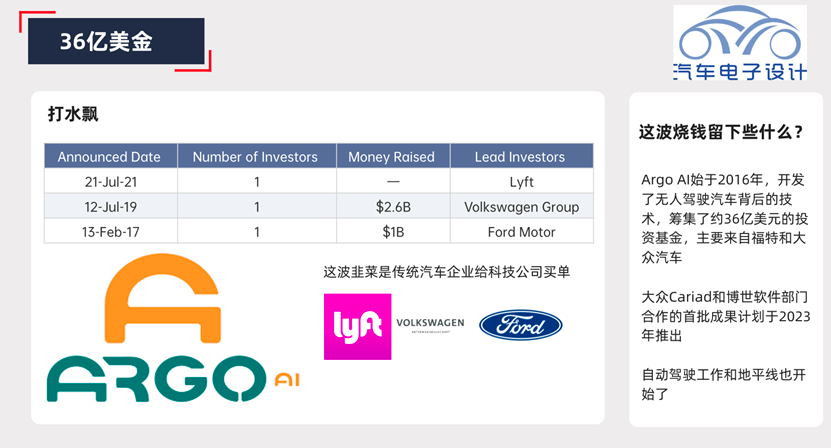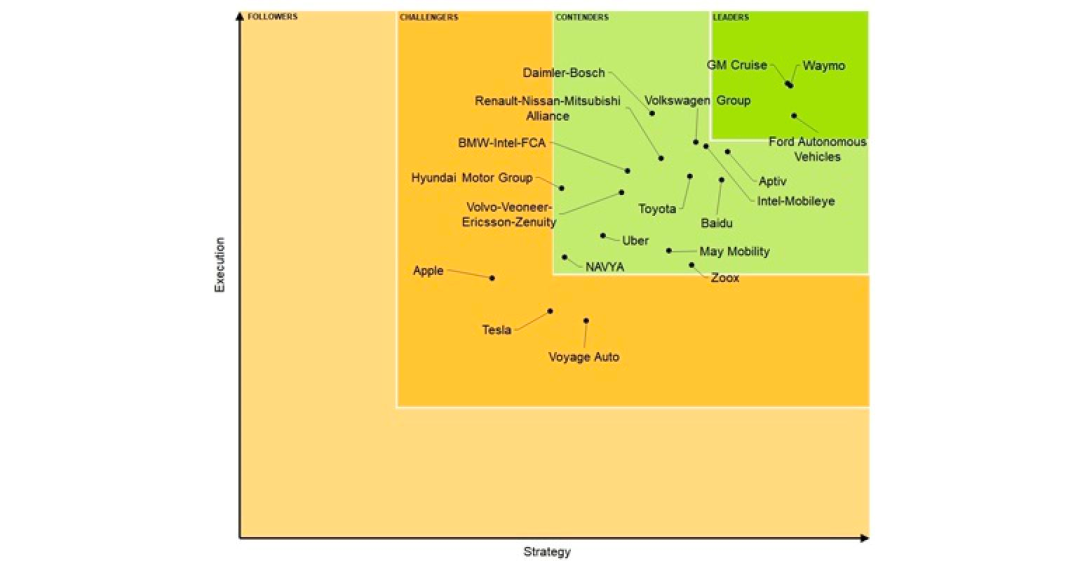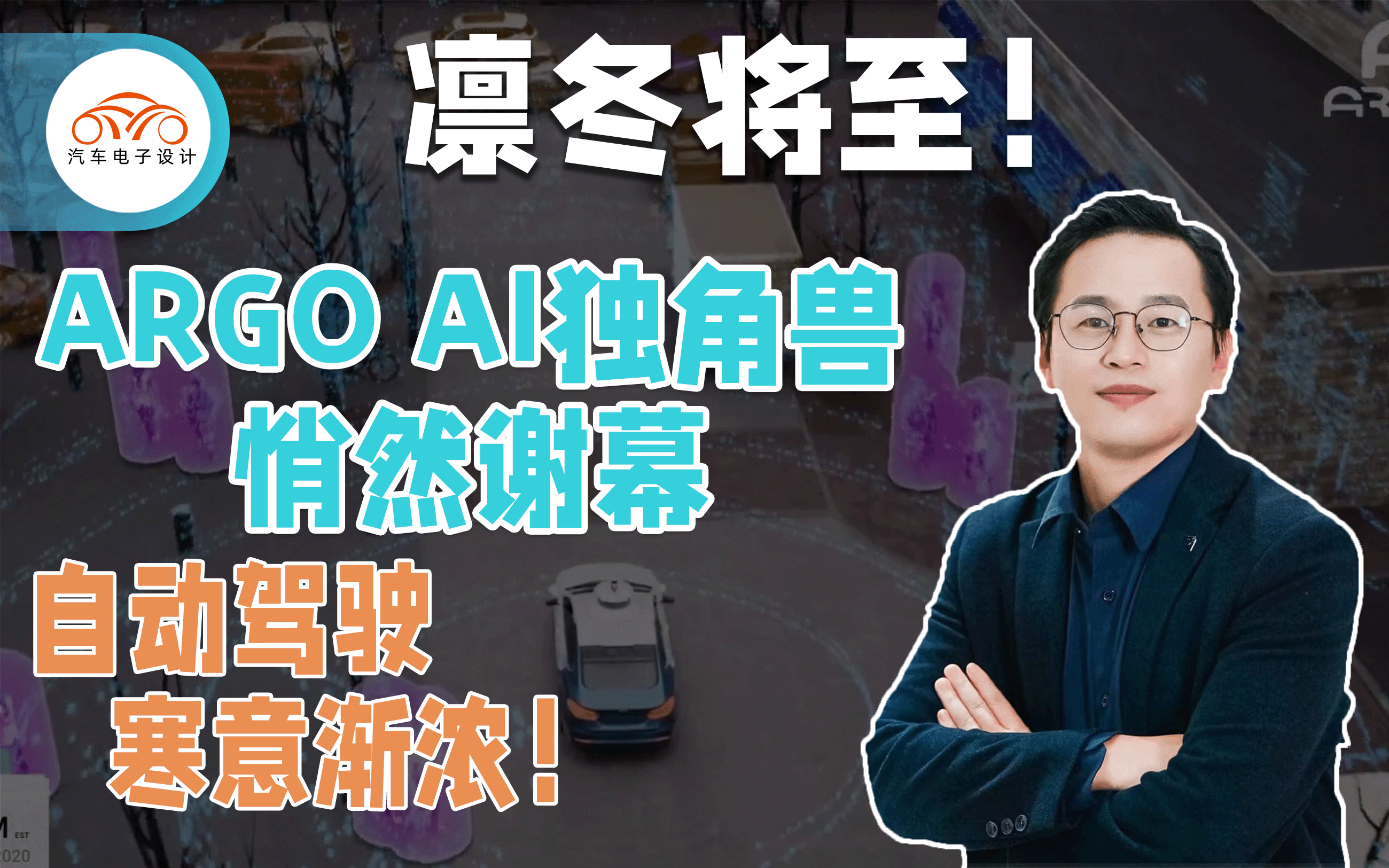Author: Zhu Yulong
Today we continue to talk about the story of autonomous driving in the previous “TalK” and “Deep Dive”.
After the dissolution of Argo AI, one of the most gossip-worthy questions in the industry is, why was Argo AI able to obtain investment from Ford and Volkswagen in the beginning, and why did it become a dead unicorn after spending $3.7 billion? Can it still be salvaged?

Argo AI’s Founders
The story starts with Argo AI’s founders.
Argo AI, headquartered in Pittsburgh, was founded in November 2016. It has two main founders.
One is Bryan Salesky, who was formerly the head of hardware development for unmanned vehicles at Google. In 2007, Bryan was in charge of software for vehicles used in the Carnegie Mellon University Challenge, and in 2011 he left NREC to join Google’s self-driving car team, which was a sought-after position at that time.
Argo’s other founder is Peter Rander, a former senior engineer at Uber’s unmanned vehicle division.
Due to the trend of the autonomous driving era, the talented founding team was favored by the capital market, and it quickly attracted attention and funding.
Why was it so easy to get $1 billion?This company was founded in November 2016. However, it’s surprising that Ford announced a $1 billion investment in Argo in February of the following year, making the company, which had been founded less than three months earlier, a wholly-owned subsidiary of Ford. Actually, when Ford made the decision to invest, Argo had yet to produce any hardware or software products. Perhaps Ford was practicing the idea that investment is about investing in people, as Argo AI had less than 12 employees, which meant that each person had a net worth of nearly $100 million.
Why did Ford’s investment appear so urgent and even a bit like an act of desperation?
You can detect a hint of the answer from the market competition: In March 2016, Ford’s old rival, General Motors, announced the acquisition of Cruise Automation. Having seen General Motors make a splash in the field of self-driving technology, Ford, naturally unwilling to lag behind, was eager to take action. Following General Motors’ strategy, Ford bought Argo and retained a high degree of control over the development of hardware and software required for self-driving vehicles.
Volkswagen adds $2.6 billion investment?
Later in 2019, Argo AI announced a new cooperation agreement with Ford and Volkswagen, through which Volkswagen provided a funding amount of over $2.6 billion, greatly promoting the development of Argo AI. Volkswagen also integrated its autonomous intelligent driving department in Munich into Argo AI, which made Argo AI’s market value exceed $7 billion at that time. Argo AI had the momentum to be at the forefront of this market, with a team of more than 2,000 people.
Why did Volkswagen follow the investment? In some sense, it was part of a package agreement between Volkswagen Group and Ford group.
In July 2019, Ford Motor Company and Volkswagen Group jointly announced that they were planning to sign a strategic cooperation agreement (this cooperation was officially signed in June 2020), and both parties hoped to achieve complementary advantages in medium-sized pickups, commercial vehicles, and electric vehicles through this agreement.In this promising vision, the two companies partnered with Argo AI obviously hope to develop their autonomous driving businesses by leveraging Argo’s autonomous driving technology.

What has been done with so much money?
Are you curious like me about how Argo, which received $1 billion from Ford and another $2.7 billion from Volkswagen, has spent all that money? As of today, this amount of money could buy more than half XPeng Motors, or almost half of NIO or Li Auto.

I checked and found that shortly after receiving $1 billion from Ford, in October 2017, Argo.ai announced the acquisition of LiDAR laser radar company Princeton Lightwave, which had raised $28 million in financing. Argo AI probably spent more than $100 million on this acquisition.
In 2019, after receiving $2.6 billion in financing from Volkswagen, Volkswagen also merged its autonomous intelligent driving department in Munich into Argo AI, which resulted in Argo AI’s market value exceeding $7 billion at the time and its team size exceeding 2,000 people. In the same year, Navigant Research also ranked Argo as a first-tier company.
 Obviously, it takes a lot of money to maintain this team. So, what exactly has this team done?
Obviously, it takes a lot of money to maintain this team. So, what exactly has this team done?
Since its independent operation, Argo has provided a complete set of products and services centered around L4 autonomous driving. This core solution includes:
-
Argo Drive, which is autonomous driving software and hardware that can perceive the surrounding environment of the vehicle in 360 degrees and control the vehicle’s operation.
-
Argo Lidar, which is a proprietary remote sensor that can detect objects within a range of 400 meters, provide early warning, and accurately identify black objects.
-
Argo Map, which is a high-resolution map network that contains information on roads, traffic facilities, speed limits, and more.
-
Argo Hub, which is a cloud tool and infrastructure used to remotely support autonomous driving cars.

In addition, Argo can also assist businesses in managing services and warehouse operations. At that time, Argo’s business covered some of the largest carpooling and cargo delivery markets in the United States, including Miami (the second-largest carpooling market in the United States in 2021), Washington D.C., and Austin.
The boost from Volkswagen and Ford brought Argo AI to new heights that it did not belong to, but it also brought a layer of foam to the commercialization of autonomous driving. According to the cooperation plan, Argo AI is responsible for realizing the commercialization of its autonomous driving system. Therefore, Argo AI is trying to accelerate the commercialization process of autonomous driving, and of course, some progress has been made in technology during this process.
Since 2021, there have been delays and contradictions in development.Starting in April 2021, Bryan Salesky, co-founder of Argo AI, announced at an all-staff meeting that the company was seeking additional funding to further commercialize its autonomous driving technology. In June of the same year, the company confirmed plans to go public in 2021. However, it is evident that the plan to go public did not materialize.
In early 2022, Volkswagen first reported that it would no longer invest in Argo AI and would only promote the development of its intelligent driving system through cooperation. By October of this year, both Ford and Volkswagen have directly changed their attitudes towards autonomous driving strategies and shut down Argo AI.
What did burning through $3.7 billion get them? First, it made Ford and Volkswagen realize the reality of the difficulties of autonomous driving and subsequently adopt a shrinkage strategy, no longer pursuing L4 autonomous driving but instead focusing on realistic goals.
Ford continued to focus on the BlueCruise active driving assistance system, while Volkswagen placed its hopes on Bosch and Horizon to increase the availability of the entire autonomous driving assistant software product.
Under the doting of two wealthy fathers, Argo AI ran on the road of L4 all the way, finally taking its last bow.
Lastly, does everyone remember another autonomous driving company, Cruise, which was mentioned earlier as General Motors’ old rival invested in by Ford? In March of this year, Cruise received a $2.1 billion increase in funds from its wealthy father, General Motors, acquiring SoftBank Vision Fund’s holdings in Cruise, and General Motors’ shareholding has already exceeded about 80%, becoming its absolute controlling shareholder.
Cruise, which received funding, hopes its fate will be better than Argo’s.The video discussing the rise and fall of ARGO AI was recorded last Saturday with Yan Yan. During the discussion, we mentioned that China’s autonomous driving industry will also have a quick response. Little did we know that the CEO of PONY AI, one of the leading autonomous driving enterprises in China, sent a significant email to all employees on the night of November 1, and the next day started a wave of layoffs. On the day the video was released, Yan Yan also received a package to leave.
I understand that PONY AI may not be the first in this wave. When the industry is faced with financing difficulties and no path to IPO, strategic shrinkage is necessary, and survival is an understandable goal.
At this point in time, we need to return to the essence of business. From the perspective of investment and industrial development, the rise and fall of autonomous driving industry deserves our attention and consideration!
This article is a translation by ChatGPT of a Chinese report from 42HOW. If you have any questions about it, please email bd@42how.com.
